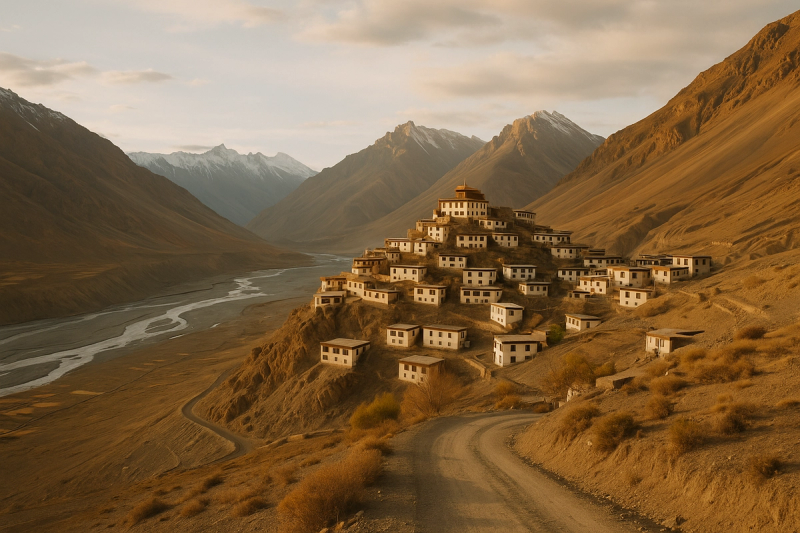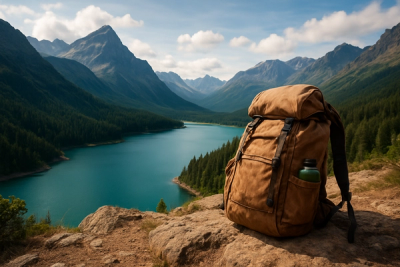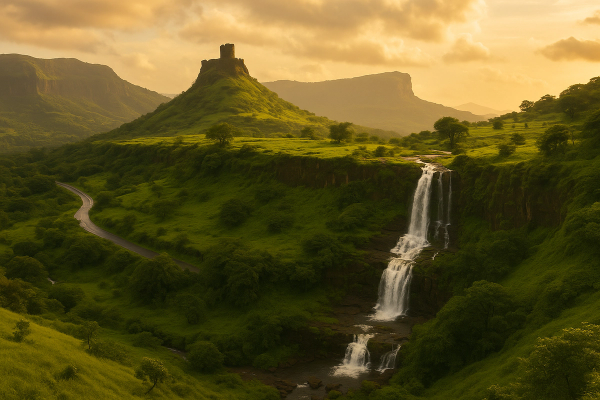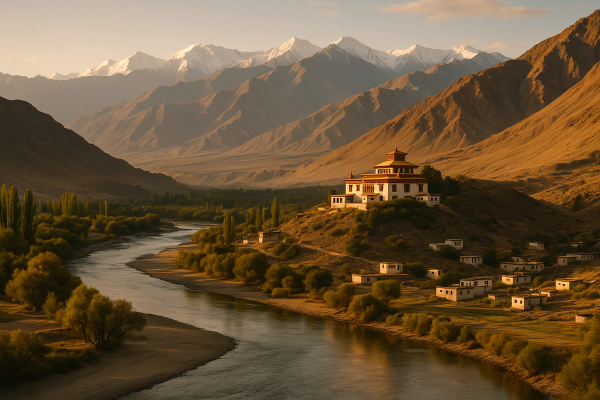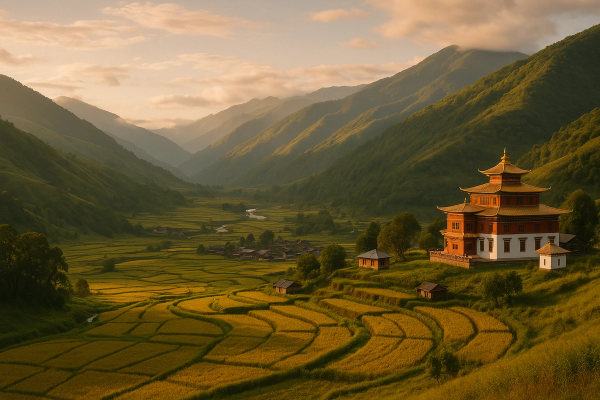Spiti Valley Photography Guide: Gear, Timing & Keylong to Kaza — the stuff that actually works (and what didn’t, lol)#
I swear there’s some kind of spell in Spiti. The air is thin, the mountains are razor-sharp, and light… man, the light is like a mood swing. Soft and buttery in the mornings, then harsh enough to burn your eyeballs by noon, then suddenly silvery and quiet at blue hour. I’ve done this Keylong to Kaza run a couple of times now, and every time I pretend I’m prepared, but Spiti has its own mind. Still, if you’re going for photography, that rawness is exactly why it’s perfect. And if you’re coming from Himachal side (like most of us), the route from Keylong is honestly the most drama, the most textures, and the most “oh s did we just drive through a river” kind of frames. So yeah, come for the monasteries, stay for the rocks. And the stars. And the butter tea that I didn’t expect to like but now… addicted.¶
Why Keylong to Kaza is a photographer’s dream (and mild nightmare)#
Keylong sits in Lahaul, a slightly greener cousin compared to stark Spiti. You drop into that moonscape after Gramphu, and boom — everything changes. The road hugs the Chandra river like a stubborn cat, the cliffs get dramatic, and you start seeing those classic ribbed mountains and braided streams that look like someone scratched the land with a giant comb. It’s intense, and it’s perfect for wide-angle drama shots. This stretch (Keylong → Sissu → Khoksar → Gramphu → Batal → Kunzum La → Losar → Kaza) is around 170–190 km depending on your detours, but time-wise? Could be 7 hours, could be 12 if the BRO guys are fixing something or streams are high. From a photo POV, every segment gives you a different mood — Sissu waterfall is lush, Gramphu to Batal is dusty and mad, Kunzum is flags and horizons, and Losar onwards feels like clean lines and empty skies. You basically get a whole portfolio in a day, but don’t rush, please.¶
Latest road, permit, and safety stuff (no gyaan, just what helps)#
Roads: Atal Tunnel has changed everything. You don’t need Rohtang permits anymore, and Keylong is reachable almost year-round. The Gramphu–Batal–Kunzum section opens roughly mid-June to early October (varies each year, keep an eye on local BRO/HRTC updates). Mornings are better for water crossings — they swell by afternoon. There’s usually a seasonal HRTC bus between Keylong and Kaza once the road is declared open; check at the Keylong bus stand the day before. As of 2025, this has been steady for the last few seasons, but don’t rely only on buses if your whole plan depends on catching sunrise at Chandratal or Key Monastery the next day.
Permits: Indian citizens don’t generally need permits for Spiti via Lahaul or Kinnaur. Foreign nationals still need a Protected Area Permit (PAP) for certain border sections — easiest to arrange at Reckong Peo or via registered agents. Drones: strictly regulated. If you’re carrying one, register it (DGCA UIN, micro or nano categories), and ask local police/monastery authorities. Do not fly near military posts, monasteries during prayers, or wildlife. People have had their drones confiscated. Not worth the reel.
Connectivity: Jio 4G works in Kaza now (pretty decent), BSNL is patchy but sometimes the only signal in smaller villages. Airtel is hit or miss. UPI works in many shops but the net drops randomly, so carry cash. ATMs in Kaza can run out; Keylong has better odds. Health: Kaza has a functional hospital; Keylong has more facility options. Altitude is real. AMS can smack you even if you’re “fit”, so acclimatize, hydrate, don’t sprint up hills like Bollywood hero for that shot. Safety: Always ask locals about the day’s road condition — streams change every day, and BRO advisories matter.¶
Timing the valley: best months and when to shoot each day#
If you want clear skies, crisp frames, and that clean contrast that makes rocks pop, late September to mid-October is magic. The air is dry, visibility insane, nights cold (be ready), and you’ll get those deep blue skies without chopping highlights. June–July is also gorgeous — snow still around Kunzum, wildflowers near Sissu/Chandratal meadows, but streams are stronger and roads are rough. August is iffy because of rain/landslides in Kinnaur, though Spiti itself doesn’t get heavy monsoon like the plains. Winters are next-level if your goal is snow leopards and moody minimal shots — but Keylong–Kaza direct normally stays shut, and you’ll access Spiti via Shimla/Kinnaur.
Daily timing: Golden hours are short at altitude, and the sun feels higher than it “should”. Mornings (6–8 am-ish summer, later in autumn) are soft and dreamy, afternoons are punishingly harsh with UV bounce off surfaces. Blue hour after sunset in Spiti is beautiful — the land keeps reflecting light for a bit longer than you expect. For stars/Milky Way, aim new moon nights between April–September; at Chandratal and Langza you get absurd skies. Also, cloud drama near Batal is great for long exposures late afternoon if wind doesn't mess your tripod.¶
Gear that survived Spiti (and what I wish I didn’t carry)#
I carried a full-frame mirrorless, a wide (16–35), a workhorse mid (24–70), and a 70–200 for compression across valleys. Honestly, that combo covers 90% of Spiti. I took a prime 35mm too, but it didn’t leave the bag much. Must-haves: polarizer (to cut that brutal glare off rocks and streams), a 6–10 stop ND (for rivers, clouds, and the occasional long-exposure monastery shot), and a sturdy tripod. If your tripod is flimsy, the wind will clown you.
Battery life can be weird at altitude — cold kills them faster, so keep batteries in inner pockets. Dust is absolutely everywhere — your zoom ring will feel crunchy if you’re not careful. Use rain covers even in dry conditions, not just for rain… more for slush and dust. Microfiber cloths, rocket blower, extra SD cards (don’t be me who lost a morning at Key monastery because the last card mysteriously decided to die). Carry a headlamp — the number of times I walked back from a sunset spot in weird terrain… ya, not smart without light. Drones, like I said, only if you’re certified and respectful; also winds at Kunzum and Chicham are not cute — I’ve seen a drone drift like it had its own plan.¶
Keylong to Kaza photo route — what to shoot, where to slow down#
Keylong: start early, grab coffee and something greasy at a dhaba — honestly the diesel, dust, and paratha is a vibe. Sissu: the waterfall viewpoint is a quick shoot, but look for those zig-zag switchbacks above the river that make superb leading lines. Khoksar to Gramphu: your last “proper” tarmac vibes. After Gramphu, the road turns into broken rock track along the Chandra river — absolutely cinematic. Park where safe and walk a bit; you’ll find braided streams, glacial silt textures, and light bouncing off the valley.
Batal: stop at the famous chacha-chachi dhaba. Apart from food (rajma-chawal here hits different), they’ll tell you road gossip and conditions. Photograph the dhaba, it’s iconic in its own chaotic way. Chandratal detour: about 14 km from Batal. Camps are 2–3 km from the lake (camping near the lake isn’t allowed — please don’t try and sneak it). Sunset at Chandratal is unbelievable, but sunrise is gentler and less crowded. Nights are freezing, milky way is ridiculous in clear months. Kunzum La (around 4,551 m): prayer flags, wide horizons, and a tiny temple. Do a slow pan, try a 70–200 for layering ridges — compression gives you those moody stacked mountain shots. Losar: first proper village on the Spiti side; great for street portraits with consent, wooden windows, and hand-painted signs that feel nostalgic.
Into Kaza: base yourself here. From Kaza, do Key Monastery for sunrise, then cross the river to shoot from the opposite ridge — the classic postcard angle with the monastery perched above fields. Kibber: stark cliffs, great for ibex in shoulder seasons if you’re lucky. Chicham Bridge: one of India’s highest bridges — low-traffic (mostly), do long exposures of vehicles crawling across for light trails at dusk, or go minimal with geometry in strong sun. Langza: giant Buddha statue and fossils scattered if you wander. Shoot tight textures and wide environmental portraits — both work. Hikkim: send postcards from one of the highest post offices in the world; the postmaster will pose if you ask nicely. Dhankar: old fort-style monastery clinging to the cliff, with a hike to Dhankar lake; sunrise gives you warm tones on the mud cliffs that look painted. Tabo: ancient monastery, beautiful murals — no flash, be respectful. Pin Valley: greener, softer — river meadows, pastel houses; amazing for foggy mornings if you catch a cold day. Gue: the mummy is a strange, humbling stop; shoot quietly, ask before taking close-ups.¶
Chandratal side trip — absolutely worth it, but don’t be reckless#
I know, I know — that perfect lake reflection shot. The road from Batal to Chandratal is narrow, two cars barely pass. Start early, avoid late afternoon traffic when taxis rush back. Camps usually open mid-June to early October, with tents priced roughly ₹1,200–₹2,500 per person including meals depending on how basic/fancy. Nights are seriously cold even in summer; carry layers, gloves, beanie. The lake itself is sacred and fragile — don’t step into the water, don’t leave trash. For compositions: shoot both sides of the lake, use foreground rocks for depth, and try low angles to get rid of crowds. Milky Way is insane from camps if the moon is low. Also, keep in mind altitude (~4,250 m): walk slowly, don’t sprint after that reflection because your lungs will file a complaint.¶
Acclimatization & health — the unsexy stuff that saves your trip#
Me and him went straight to Losar once, and my one friend got a dull headache that turned bad by evening — classic AMS. So now I plan it boring: night in Keylong (or Manali if needed), lots of water, no alcohol first day, and Diamox only if your doc says it’s fine. At this altitude it’s not about fitness, it’s about how your body reacts. If you feel pukey or dizzy, descend a bit. Sunscreen is not optional, neither is a cap. Electrolytes help, especially on long shooting days where you forget to eat (been there). Keep a small medical kit: paracetamol, ORS, anti-nausea, band-aids, antiseptic, and fabric tape. In Kaza, the hospital does basic stuff well, but don’t expect city-level imaging. Also, toilet breaks on the Gramphu–Batal route can be… creative. Carry tissue and don’t leave anything behind, please. Pack in, pack out.¶
Where to stay, what it costs, and what’s yummy right now#
Keylong has decent guesthouses and homestays at ₹1,000–₹2,000 for a clean room. In Kaza, homestays typically go ₹800–₹1,500 per person with meals, mid-range hotels are ~₹1,500–₹3,000 per night, and boutique stays can be ₹3,500–₹6,000+. Power cuts happen; most places have backup but don’t depend on it for charging your entire camera ecosystem overnight. Wi-Fi is improving; Jio 4G in Kaza works okay but can ghost you randomly, so send that client file earlier in the day.
Food: thukpa and momos everywhere, tingmo (steamed buns) with gravy is a hug in a bowl, seabuckthorn tea/juice is local and actually tasty. Butter tea… is an acquired taste but warms your bones. In Kaza, cafes do everything from Tibetan to Israeli to basic North Indian. Breakfasts are heavy — good for long shoots. Cash vs UPI: UPI works in most of Kaza and bigger villages, but always carry cash for small dhabas and camps. ATMs can be finicky; withdraw in Keylong if you can.¶
Hidden angles and compositions that most folks skip#
At Key Monastery, shoot from the opposite bank at dawn, but also go wide from behind the gompa — the rear layers against sky are underrated. At Chicham Bridge, try vertical frames that exaggerate height with a person walking (no stunts). Langza at night: aim for the statue silhouette with stars instead of the obvious foreground-lit shot — go subtle, you’ll thank me. Dhankar: classic top-down shots are nice, but walk below the village for a low-angle view where the cliff becomes a monster. Pin Valley: look for early morning mist near river bends; put a human in it for scale, but ask first. Batal: if you get clouds, throw on an ND and go long with moving cloud streaks — gives that epic vibe without needing to overprocess. For stars: 14–20 mm, f/1.8–2.8, 10–20 seconds, ISO 3200–6400 depending on how clean your sensor and how brave you are with noise. Shoot a foreground at blue hour and blend if you want, but even straight SOOC can be wild if your light discipline is good.¶
Getting around: buses, shared taxis, self-drive — what’s realistic#
Seasonal HRTC buses run Keylong ↔ Kaza once the road opens; they’re cheap and reliable in a Himalayan way (meaning: sometimes late, but they show up). Shared taxis from Keylong or Kaza are common — bargain gently, usual rates for long day runs vary a lot; think ₹1,500–₹3,000 per person depending on distance and season; full taxi day-hire stretches ₹5,000–₹10,000+. Self-drive is epic but only if you’re chill with rock tracks, shallow river crossings, and surprises. A high-clearance vehicle helps more than raw power. Fuel: tank up at Tandi (near Keylong) — it’s known as the last pump for long stretches. Kaza has a petrol pump but it sometimes closes or even runs out temporarily; carry a jerry can, don’t push that needle. Tyre pressure: go slightly lower on the rock sections for grip, but not too low. Start early always — lots of day-trippers, and water crossings rise post-lunch. And seriously, don’t block narrow sections for the perfect drone shot; everyone will hate you, you’ll hate yourself.¶
Culture and respect: monasteries, wildlife, and drone etiquette#
Monasteries are living spaces — not museums. Remove shoes, don’t wave your lens in faces mid-prayer, no flash for murals (they’re centuries old and delicate). Ask a monk or caretaker if you can shoot inside; a simple “photo please?” goes a long way. Donations help maintain these places. Wildlife: Kibber area has ibex, and winters bring snow leopard sightings with local guides; don’t chase, don’t yell, don’t get too close. Long lenses make you a better human. Drones: ok I’ll repeat — permission, distance, respect, and zero flights around military posts or monasteries during ceremonies. Trash: carry a tiny trash bag with your camera gear, you’ll eat and snack on the go; leave no wrappers behind. Chandratal has strict rules for a reason — camp only in designated sites 2–3 km away. The land remembers your footprints more than your photos, trust me.¶
A chill 5-day photo plan from Keylong to Kaza (flex it as you like)#
Day 1: Keylong to Batal, slow driving, photo stops at Sissu and Gramphu; lunch at Batal dhaba; sunset frames along the Chandra river. Either stay at Batal or push to the Chandratal camps if the road’s calm.
Day 2: Chandratal sunrise, reflections and minimal frames; head to Kunzum La for mid-day layering with a 70–200; reach Kaza by evening. Night shoot in Kaza if the sky behaves.
Day 3: Key Monastery sunrise from opposite ridge; Kibber and Chicham for geometry; golden hour on the bridge; back to Kaza for dinner and sleep.
Day 4: Langza–Hikkim–Komik circuit, fossil textures and portraits; sunset at Langza or Pin Valley depending on your mood. New moon? Stay out late for stars.
Day 5: Dhankar sunrise, lake hike if you’ve got lungs left; then Tabo for murals and calm interiors; return to Kaza or onward if your plan continues. If you’re going out via Kinnaur, keep buffer days — landslides don’t care about your calendar.¶
Common mistakes (I made most of these) and how to dodge them#
I overpacked lenses and underpacked warm layers — don’t be me. Carry gloves that let you operate camera controls. I trusted UPI too much once, and the network left me hanging at a camp — carry cash. Don’t shoot only wide; the 70–200 is a beast for mountain shapes and candid village portraits from a respectful distance. On my first trip I did Dhankar in harsh noon light — ouch — the cliffs lose detail and your files look chalky. Another rookie move: not cleaning the sensor nightly in dusty weather; spots will haunt your skies, and it’s painful later. I also once tried to do Batal to Kaza late afternoon — streams were raging and we had to wait it out. Start early, always. And don’t skip rest — if you push too hard day one, AMS will smack you on day two. No double negatives: don’t not listen to your body. Actually, do listen.¶
“Spiti teaches you to slow down — both your breathing and your shutter. The mountains don’t care if you got the shot, but they’ll gift you one if you wait.”
Randomly useful things that made my trip better#
A small collapsible stool — sounds dumb but sitting low near streams avoids wet rocks and gives sweet foregrounds. Ziplock bags for memory cards (dust is the real villain). A physical map — networks drop, and you’ll feel old-school cool plotting routes at dhabas. Headlamp and spare torch. Two powerbanks; one lies, one works. Electrolyte sachets, because chai doesn’t hydrate you as much as we pretend. Refillable bottle, ask homestays to top it — don’t buy plastic every day. Also, build buffer days into your plan, esp. if you’re exiting via Kinnaur (Reckong Peo to Nako to Tabo can be slow). If you’re publishing or selling photos, log location names properly — Spiti folks are proud of their villages and stories. And yeah, if you’re reading this later, road openings shift every season; don’t blame your life on an old blog — check local updates at Keylong/Kaza bus stand, BRO posts, and ask drivers. They know more than any map.¶
What this journey feels like, really#
There’s a moment after Kunzum when the valley opens and the sky looks way too big. You feel tiny and weirdly peaceful. For me, Spiti is not just a photo destination, it’s a reset. The frames you make here aren’t hyper-saturated postcards (okay, sometimes they are, guilty), but mostly they’re about silence, lines, horizon, and people who live in that silence like it’s normal. I love that. It’s humbling, and weirdly addictive. Every trip I say, bas yaar, last one, but then some photo I took at Langza reminds me of how the wind sounded, and I’m plotting the next run like a fool who never learns.¶
If you’re going soon — final word and small nudge#
Pack light but right, start early, shoot with kindness, and leave places better than you found them. If you want epic shots, don’t chase — let the valley decide. Also, you don’t gotta oversay about which year you came; Spiti doesn’t care, it looks timeless anyway. If you want more travel stories, nitty-gritty guides, and random India trip hacks that actually help, I keep dropping stuff on AllBlogs.in — swing by when you’re planning, or just to daydream your next hill trip.¶

